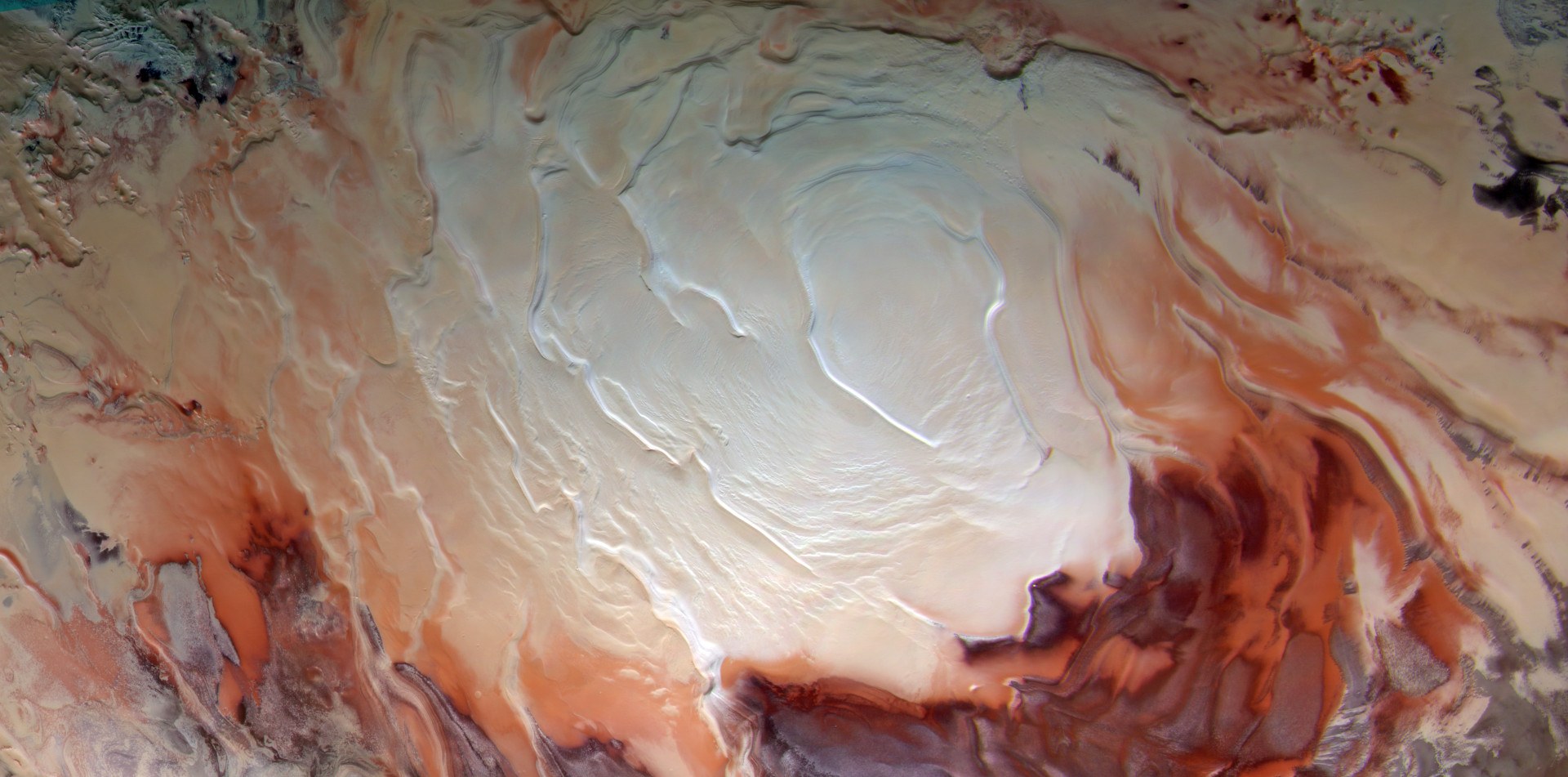The southern polar ice cap on Mars at the beginning of spring
The southern polar ice cap on Mars at the beginning of spring
Central Europe is still waiting for its first heavy snowfall of the winter. However, a look at Mars shows a landscape covered by ice and snow at the planet's South Pole. The data used to create this image were acquired on 17 December 2012 by the High Resolution Stereo Camera (HRSC) developed by the DLR Institute of Planetary Research in Berlin-Adlershof, which orbits on board ESA's Mars Express spacecraft. After a 343-day polar night, the Martian South Pole is once again shining in the light of spring sunshine, resulting in rising temperatures that will cause the 600-kilometre-wide ice cover to shrink. In the southern Martian summer, the ice cap shrinks to a diameter of only 400 kilometres. This vertical plan view of the South Pole was created using data acquired at orbital altitudes of between 1330 and 1700 kilometres, with an image resolution of approximately 200 metres per pixel. The image was created using data acquired by the blue, green and near infrared sensors, and approximates the true colour impression that the human eye would observe from a spacecraft in orbit. The colour differences in the ice cover are the result of alternating ice and dust layers. The Martian south polar cap is up to 1500 metres thick and surface temperatures can fall below minus 130 degrees Celsius during winter. This causes carbon dioxide ice to fall like snow onto the surface of Mars, causing the polar cap to grow once again.

